#celtic folklore
Text
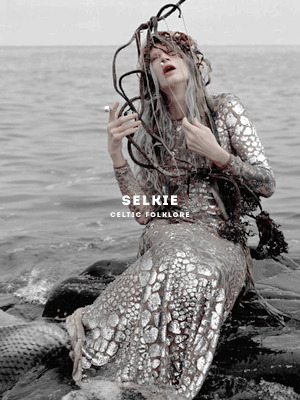
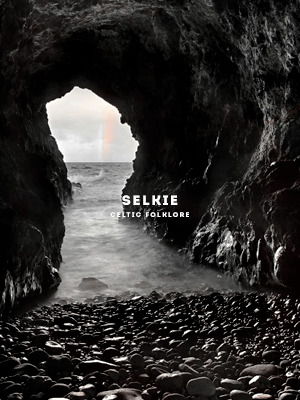


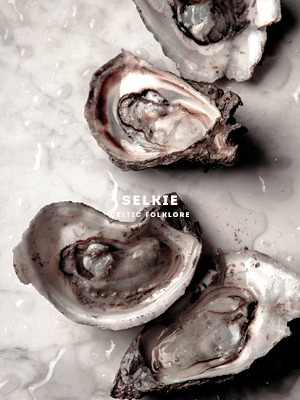
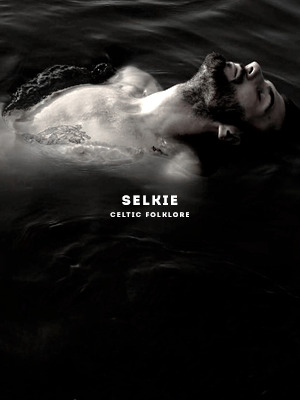
celtic mythology: selkie
"Peppered throughout Celtic folklore are stories about seal people, also called selkies who are said to be cursed with a constant longing for what they do not have: when they are swimming in the water as seals, they yearn to be on land, and when they walk on two legs as a human, they long to be in the sea. They can transform from one creature to another by shedding their sealskin, and alternatively, putting it on again."
#mythedit#mythologyedit#celticedit#folkloreedit#mythology#celtic mythology#celtic folklore#scotland#ireland#selkie#mine
335 notes
·
View notes
Text

DULABRAY (Dúlamán/Mudbray/Bray) & DULADALE (Dúlamán/Mudsdale/Dale) (water/grass)
A convergent evolution of MUDBRAY & MUDSDALE based on kelpies and kelp. Their shiny is based on white kelpie, red kelp, and the “red tide” of algae blooms.



#my art#fakemon#convergent pokemon#convergent fakemon#mudbray#mudsdale#kelpie#celtic folklore#water type#grass type#algae#kelp
2K notes
·
View notes
Text
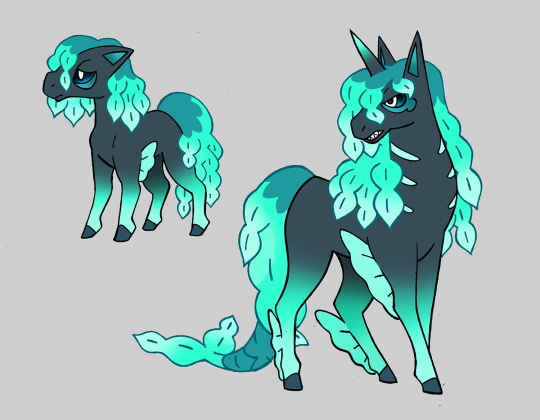

Kroelian PONYTA & RAPIDASH (Water/Ghost)
They are based on the Kelpie, a celtic water spirit that its said to take the form of a Horse, either black or white, with its mane always dripping wet and covered in seaweeds. They live on the lochs and will invite people to mount them, only to take them into the loch and drown them for later consumption. Their manes are also based on Kelp, a type of seaweed that is actually not a plant, it belongs to a different genera.
Their shiny colors are based on red seaweed and the "red tides", the common name ofte given to a phenomenon known as "Harmful algal bloom" (HAB)



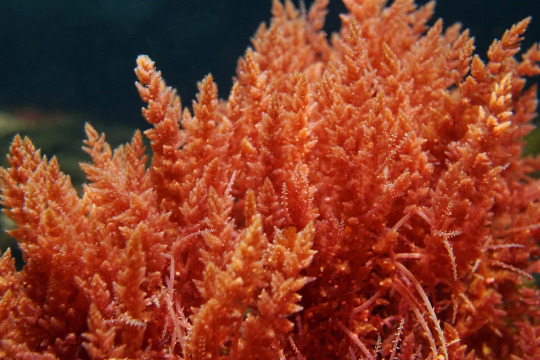
#pokemon#fakemon#regional form#fake pokemon#regional variant#rapidash#ponyta#kelpie#celtic my#celtic folklore#water#water type#water pokemon#water fakemon#ghost#ghost type#ghost pokemon#ghost fakemon#algae
2K notes
·
View notes
Text
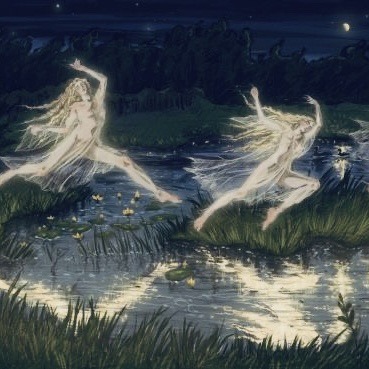
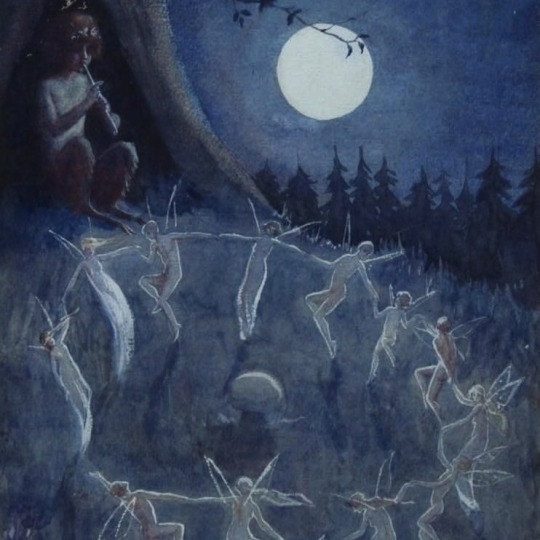
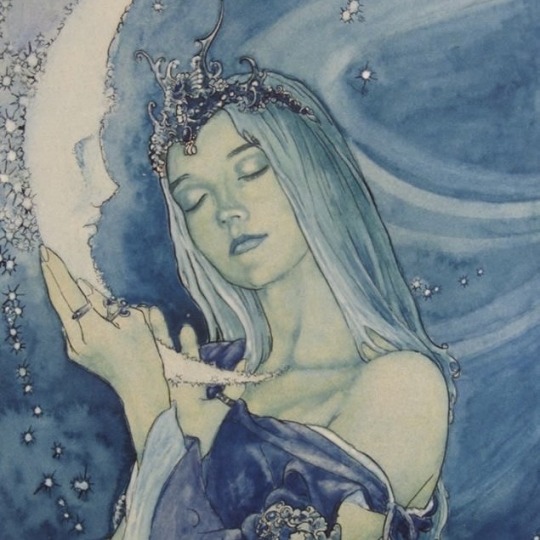
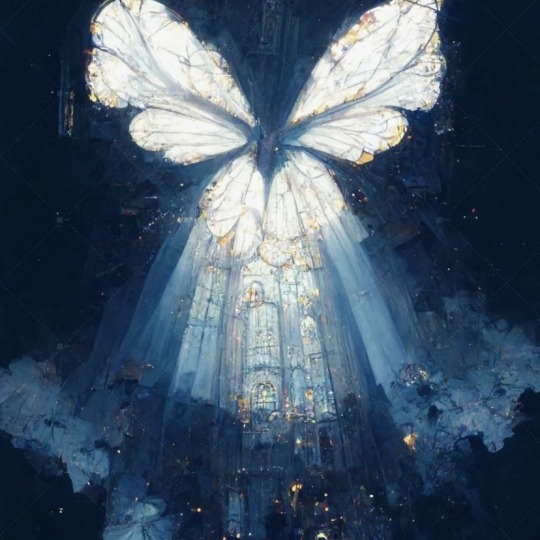
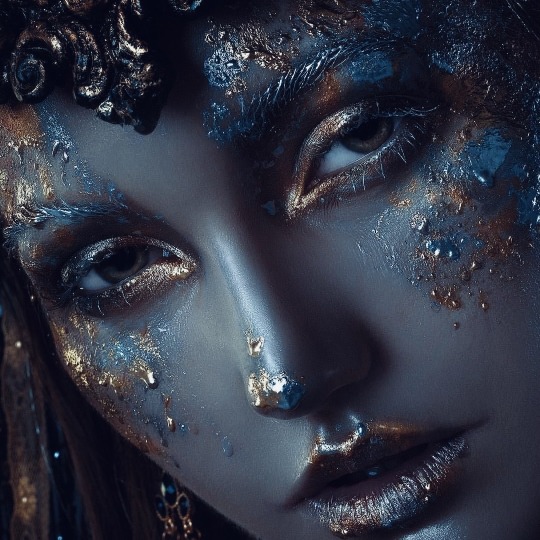

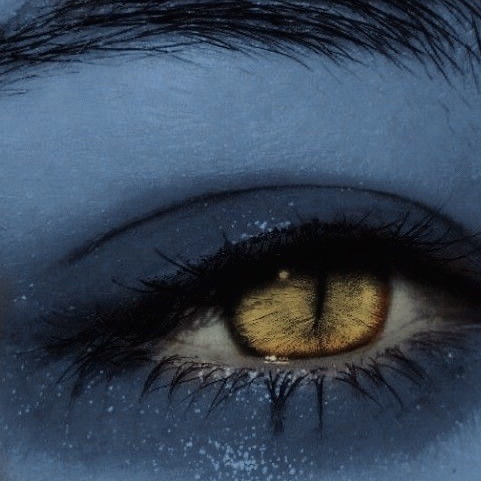

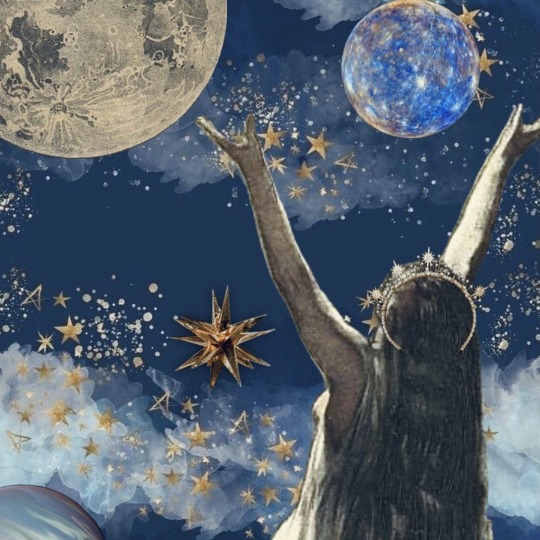
World Mythology: Fey, Faeries, and Fairfolk
“Faeries, come take me out of this dull world, for I would ride with you upon the wind, run on the top of the disheveled tide, and dance upon the mountains like a flame.”
- adapted from The Land of Heart's Desire by William Butler Yeats
#fairies#fairycore#fairy#fae#faecore#high fae#fey#fair folk#fairy tale#celtic folklore#celtic mythology#irish folklore#irish mythology#william butler yeats#acotar#acosf#the stolen heir#the cruel prince#tcp#tfota#the iron king#hoeab#rhapsodic#fairy dance#mythical creatures#sky aesthetic#blue aesthetic#moodboard#night court
272 notes
·
View notes
Text
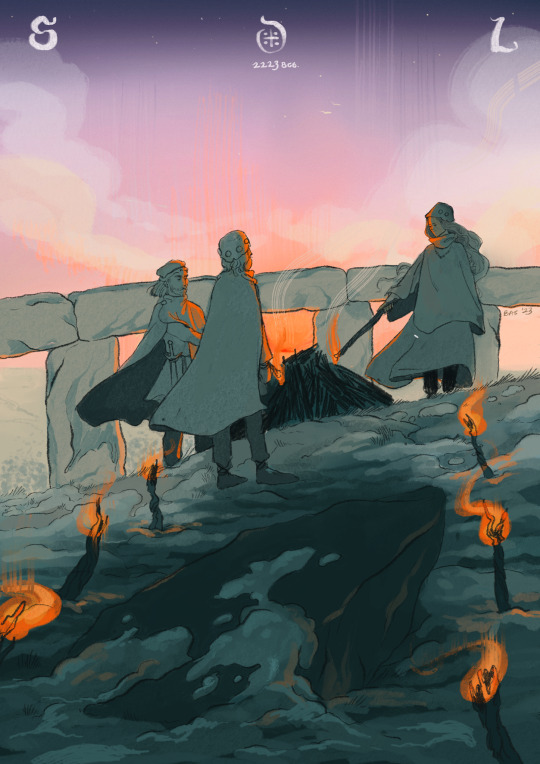
sundown at solstice (2223BCE)
merry midwinter folks!!
#winter solstice#oc art#stonehenge#folk art#the chief#chief’s life and lore#digital illustration#artists on tumblr#original comic#the lonely barrow#celtic folklore#bronze age#early bronze age#late Neolithic#happy solstice
121 notes
·
View notes
Text
Fae Encounter Tips
1. Always be polite, smile, stand up straight, make eye contact. If you MUST count their fingers to ensure they're a fae, be very careful to do it subtly - staring for too long is very rude.
2. When they ask for your name, do NOT give it. Say "I cannot give you my name, however you may refer to me as [Insert Fake Name]".
2a. "Ainsel" (short for "Me Aan Sel", meaning "My Own Self") is a good fake name - any Fae trying to use said name to put a spell on you will only end up applying it to themselves. However, beware that this comes from a fairly famous fairytale, thus older and wiser Fae may be aware of the trick and not take kindly to it.
2b. A Fae may also extend their hand to "take" your name - the handing over gesture further solidifies the power they are taking over your identity. Do your best to avoid the handshake, even with a fake name - consider wearing an iron/silver/metallic ring. Not wanting to touch the Fae with it for fear of hurting them can be a believable and polite excuse.
2c. Do not ask a Fae for their name - they might take it as you trying to claim power over them. Ask them how you may refer to them, instead.
3. Do not refer to Fae as such directly to their face - call them one of the euphemistic terms, such as "Good/Fair/Blessed/Wee/Hill Folk", "The Good Neighbors" or "The People of Peace". Remember that "Fairy" and subsequently "Fae" is a shortening of "Fair Folk", designed for humans, and is essentially impolite slang.
4. Do not accept any gifts or favours. Fae do not give gifts without expecting something in return, and you do not want to owe them anything if you can help it.
4a. Accepting food will forever bind you to their realm - you will not be able to find your way back, and will soon forget your human life. This might be something you want - I can't make that judgement call for you.
4b. Decline politely - do NOT say thank you (as even without accepting the gift/favour, this will count as a debt), but do acknowledge their generosity. Have a good excuse ready.
4c. Should you, unwittingly, end up owing a Fae something, be sure to put out a dish of cream/milk as soon as you return home. Hope that they accept it as payment.
5. Do not follow a Fae to a third location. You never know when you'll be able to get back from it - even if a Fae is not malicious or mischevious, time does not pass for them as it does for us - you may return home to find that centuries have passed.
6. Do not lie, do not be rude, and do not yell - do try and use double-talk and thick quickly on your feet. Fae thrive on technicalities and loopholes, and exploiting them yourself will not be considered rude.
7. Ensure that the Fae doesn't owe YOU anything, either - insist you aren't able to help them if they ask, do not save them if they appear trapped, etc. A Fae owing you is no less dangerous than you owing a Fae - unless you're in DIRE need, make your best effort to leave the encounter with neither of you owing anything to the other.
8. Once you return home, check to see that nothing is missing, that nothing is broken, that your pets are safe and their fur isn't tangled, watch for small footprints or various little items that weren't there before - if you did everything right, there should be no signs of Fae interference.
8a. If you do find signs of Fae interference, put out an offering far away from your house as soon as possible.
8b. Items left by Fae in your house should be given back with said offering - loudly acknowledge their generosity and that you simply can't accept their offer. Return home quickly. Consider putting a horseshoe on your door.
#fae#fairies#faerie#fair folk#mythology#celtic folklore#folklore#celtic#creative writing#just messing around#fairytales
133 notes
·
View notes
Text

Tristan and Isolde, legendary lovers of Celtic Mythology
#tristan and isolde#celtic folklore#celtic mythology#legendary#romanticism#true romance#romance#romantic
70 notes
·
View notes
Text
there's something so nice about just vibing with your niche interests which don't have a big fanbase. it's something a lot more personal and cosy about it, like it's yours and yours only and you don't have a huge fandom full of loud opinions and various scuffles and dramas. idk, it just hits different
#downside ofc is the lack of content :')#may monolouges#imma tag some of my niche interests down below >>#the adventures of tintin#luca 2021#shaun the sheep#aardman#snufmin#moomins#moominvalley#celtic folklore#folklore#celtic songs
100 notes
·
View notes
Text
The Evil Eye in Irish Folklore
In pre-modern Ireland, like in many other cultures, the power of the gaze held immense significance. Practices and customs associated with the evil eye were passed down through generations, and many were collected in The School's Collection in the 1930s.
The School's Collection has proven to be an indispensable asset in my exploration of Irish paganism. However, it can be quite a task to read, classify, and integrate all the materials on any given topic. The following are my notes from what I've encountered searching the records, but I hope they'll prove useful to others.
What is the evil eye in the Irish folk tradition?
In Irish folk traditions, the evil eye was believed to possess an otherworldly power, capable of causing illness, misfortune, and even death.
It was believed that those who possessed the evil eye could knowingly or unknowingly project this baneful magic onto others simply through their gaze. The evil eye could affect many aspects of life including people, livestock, and crops.
This ability is often referred to as "overlooking" or "blinking" in the Duchas records and the terms can be used interchangeably.
In this locality, long ago, it was a common belief, that if people met with any reverses, or suffered any loss of property, the misfortune was due to "the evil-eye," meaning that some person supposed to have an evil eye "overlooked" their property, and that was considered the reason for the particular piece of ill-luck. If a person with an "evil-eye" took particular notice of any animal, for example, the animal would either do himself an injury or pine away gradually. Usually, the possessors of the "evil eye" were not aware that they had such a particular kind of eye, or were connected with other people's misfortunes. Duchas.ie
What causes the evil eye?
There are numerous things that could cause someone to be born with the evil eye (people are generally considered to be born with it rather than acquiring it later in life). Some of the reasons recorded are:
Having the surname Marrinan 1, 2, 3 or Kingfisher 4.
Being born on Whit Sunday (the seventh Sunday after Easter) 5, 6 or on June 29th 7
Babies returning to breastfeeding after being weaned 8, 9
Babies seeing their baptismal towel before it was washed 10
Your Godparents omitting a word during your baptism 11
Prevention of the evil eye
To protect themselves from the ill effects of being overlooked, people developed customs and rituals, the most popular of which included:
Waiting to light their fires on May Day so that the evil eye did not take their luck and profit for the coming year 12
Placing St. Brigid's crosses around the home (and outhouses) 13, 14
Nailing a donkey's shoe to the threshold of the home (this also helped to guard against the Good Neighbors) 15
For animals, placing a Gauldoron Garragh knot on their back would provide protection 16
Using red items (usually cloth) to distract the evil eye 17, 18, 19, 20, 21
Asking God to bless the person or thing being talked about after you suspect an overlooker (a common term for those who possess the evil eye) has spoken about them 22, 23, 24, 25
Jumping through the flames at midsummer 5
Cures for the evil eye
If all your preventative measures failed, there were several cures that could be tried.
For a baby born on Whit Sunday or another unlucky day, the cure was to place green sod over them three times 4, 6, 8
A cure commonly used with animals thought to have been overlooked was to write the overlooker's name (if known) or the entire alphabet (if the overlooker's name is unknown) onto a piece of paper or other burnable material and burn it under the animal's nose so that it inhales the smoke 26, 27, 28, 29, 30
A piece of thatch from the overlooker's house, or even a piece of their clothing can also be burned under an animal or person's nose (or burned and then the ashes put into a drink) to cure the evil eye 27, 28, 29
Water from a place where three townslands meet can cure when sprinkled on the overlooked animal or person, but the person who gets the water must not speak to anyone on their way there and back 30
Forge water can also be used in the same way 31
While the belief in the evil eye has faded over time, the echoes of these traditions can still be felt in Irish culture today. These records serve as a reminder of the deep-rooted folklore and superstitions that once shaped the lives of the Irish people and can help inform our Irish pagan practices today.
#the evil eye#paganism#irish paganism#irish pagan#irish folklore#celtic pagan#celtic paganism#celtic folklore#folk magic
149 notes
·
View notes
Text
Spectral Whispers: Exploring the Enigmatic Realm of Celtic Faeries with W.S.
The ethereal world of Celtic faeries, where tales of magic and wonder entwine with the whispers of the wind, guiding us through enchanted forests and across shimmering meadows. So, brew a cup of tea, settle in, and let us unveil the captivating allure of Celtic faerie folklore.
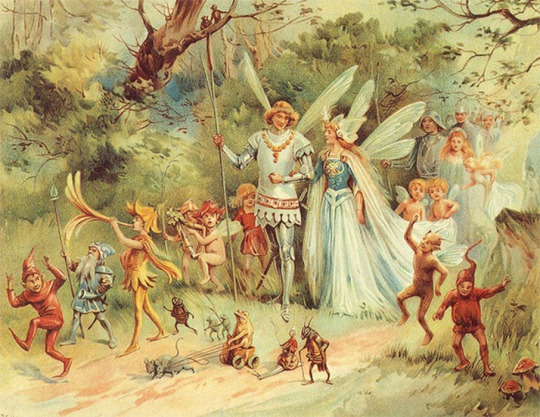
Firstly while I will be using the term Fairies in this article for continuity, the Irish refrain from calling them the Fae or Fairies and Prefer to call them " The Good People' or " The Little People". The Fairies of the Emerald Isles were said to reside in a parallel universe to that of the mundane world.
Usually stated to be underground, the realm of the Fairies is said to be mostly invisible to human eyes. These are unlike the Fairies found within the writings of Disney and Modern Pop Culture. They are of a darker brood, Still Majestic and Beautiful, even downright awe inspiring. But many are said to be dangerous and uncaring for the mortals they Encounter in these folk tales.
So Let us go over some of the most well known Irish Fairies in celtic Folklore
The Who's Who of Tír na nÓg
There are hundreds of stories of faeries which stem from ireland, and while we won't go into every single one, here are some of my favorite honorable mentions from Ireland's beautiful folklore
Pooka: The Changer Of Forms
Commonly Referred to as Puca, it is a type of shape shifter in Irish Folklore which takes the shape of Animals or Humans. Commonly seen with forms similar to cats and horses, it was seen as unwise to anger these fae. Depending on the Area of Ireland, they are seen as either helpful, or as embodiments of chaos.
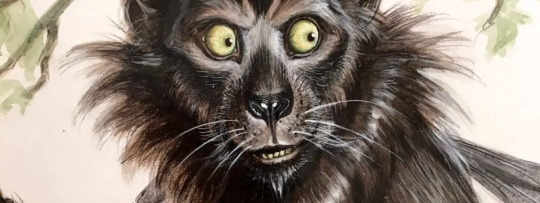
Dullahan: The Headless
The Dullahan is a malevolent harbinger of death. It is said to be the embodiment of Crom Dubh, a fertility god who demanded blood sacrifice in the form of decapitation.
This aspect of Irish folklore has been incorporated into American folkloric traditions as well, specifically in the stories of the Headless Horseman. His stateside debut was in Washington Irving's 1849 short story " The legend of sleepy hollow" while inspired by the original Irish works, The headless horseman has become an American Halloween staple.
Giving nightmares to children for decades since its release :)
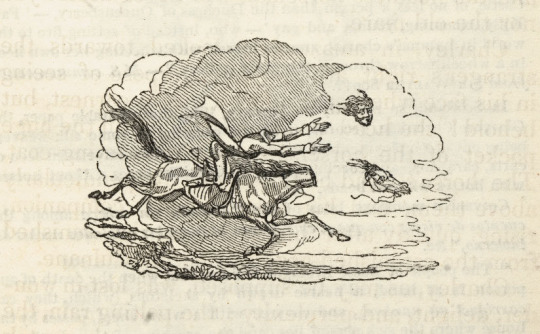
Changelings: Stealer of babes
A fairy that was left in place of a human child or baby who had been stolen by the fairies. The baby was to live amongst the humans as they raised the other in the fae realm. The stories differ depending on the situation, it was often used to explain away different developmental delays, or even unexplainable deaths of their small children.
Humans would often leave these babies out in the woods to parish if they believed they were changelings, to them they hoped by leaving them the faeries would take the trade and give them their baby back.

Banshees: Screams Of Warning
a female spirit who wails outside a home to warn of the imminent death of a family member. The scream is also known as "caoine," which literally translates to "keening". She has also been called woman of the mound as in many of the stories she stands outside the homes and cry's from the fairy Mounds.

Leprechaun: Punishers Of Greed
a type of fairy that is often depicted as a tiny, bearded man wearing an emerald ensemble. Leprechauns are said to live in remote places and make shoes and brogues. They are solitary by nature and are a symbol of what happens when you let your greed win. Quit literally the Folly of the Get Rich Quick Mentality Of Many Humans.

These are but a small sample of the many fairies found throughout Irish and Celtic Folklore, These specifically can trace their origins back to The Tuatha De Danann or fairy nobility. Also seen as Gods and Demons depending on the era. As well as the original inhabitants of Ireland who only Tolerate our existence so long as we don't disturb the places and sacred sites they hold dear.
Faeries impact on Modern Day
All over Ireland, farmers have left portions of their land, in the form of Ring Forts untouched for centuries. These are believed to be the homes of the fairies and are overgrown with shrubs and bush. But farmers would rather see this resource go to waste than risk incurring the wrath of the fairies, which can result in anything from crop failure to DEATH.
This a recurring theme you will see throughout Irish history a respect for the property owned by the Fae and a rightful fear at the consequences of disturbing sacred ground.
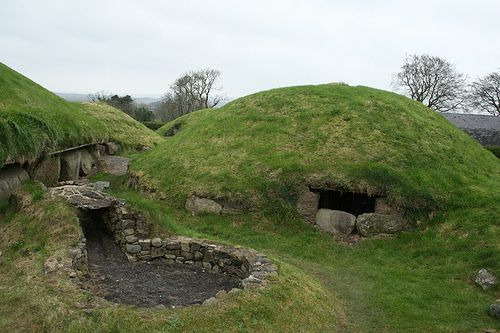
How to not Piss Off The Fae
Folk Practices to appease fairies or at the very least keep you on their good side include Offerings of sweets and goods in which holds value to the person leaving the offering, back in the day it was things like this
Milk or cream
Bread
Honey
Butter
Porridge
Gold
Tobacco
Poitín
I hope you enjoyed learning about the faeries of Celtic Folklore with me today, remember to stay curious my friends.
Thank you for sitting down and having Tea with me on the Other side of the Great Divide
𓆣Patreon Saw It First, Come Join Us For Early Access To Wanderers Tea Time𓆣
☕ Like My Blog? Then consider buying me a Ko-Fi ☕

#magick#fairies#fae#folklore#celtic folklore#folklorist#irish#gaelic#magus#witch#witchcraft#witches#witchblr#WanderingSorcerer#occult#occultism#occultist#demons#ars goetia#solomonic magick#magi#grimoire#grimoires#witchythings#witchlife#pagan witch#herbalist#plants and herbs#herbology#herbalism
160 notes
·
View notes
Text
Americans can come up with the most idiotic and outright disrespectful things imaginable so effortlessly. I saw a post about an American "witch" claiming that she saw a "Celtic fae" in her back garden (in TEXAS) "picking flowers and eating berries" and the next day her husband told her she was "speaking gaelic in her sleep" (her words) first things first the Irish language is called Gaeilge NOT gaelic, gaelic is an adjective essentially we use it in things like gaelic football etc, secondly I can guarantee she did not see a fae in Texas??? Like that should be common sense??
Thirdly faes and fairies are VERY different things, if you're going to pretend to be knowledgeable on Celtic legends and lore at least know the bare minimum, faes are not friends, they are not a force to be reckoned with, if you somehow meet and annoy a fae it can and most probably will harm you and everything you love both physically and mentally.
And I know I can't be nitpicky but if you are going to use Irish words in your vocabulary please for the love of life at least try and pronounce it right, wtf is belt-tane (bhealtain) and Fawm-hair (fomhair)
Our language and culture is not you magical, fairy, witch aesthetic or lifestyle, it is genuinely disrespectful. We have such a rich, beautiful history and it's so easy to learn and talk about it in a respectful way, infact I think everyone should learn actually Irish/Scottish/Welsh history because it helped shape many things in our world e.g religion and fairytales.
If anyone who sees this wants to know more about Ireland or Celtic history/folklore or lore please ask me I'd love to share
#irish#irish history#irish literature#irish art#irish folklore#irish music#scottish#welsh history#celtic folklore#gaeilge#legends#faes#an bhean si#the salmon of knowledge#rant over
174 notes
·
View notes
Text

Blackberries are pretty plentiful this time of year in Ireland. Just make sure you pick them before Samhain or else the Púca will spit on them.
My September Postcard! Still time to sign-up if anyone would like one.
#irish folklore#celtic folklore#folklore#puca#pooka#fairy#illustration#my art#irish#ireland#fantasy illustration#artists on tumblr#samhain#autumn#halloween
123 notes
·
View notes
Text
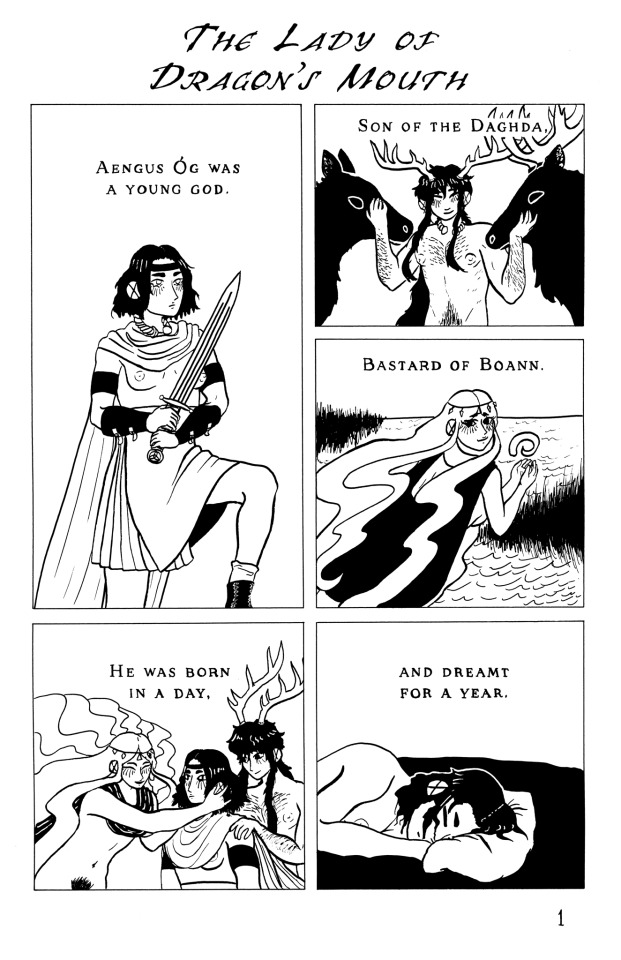
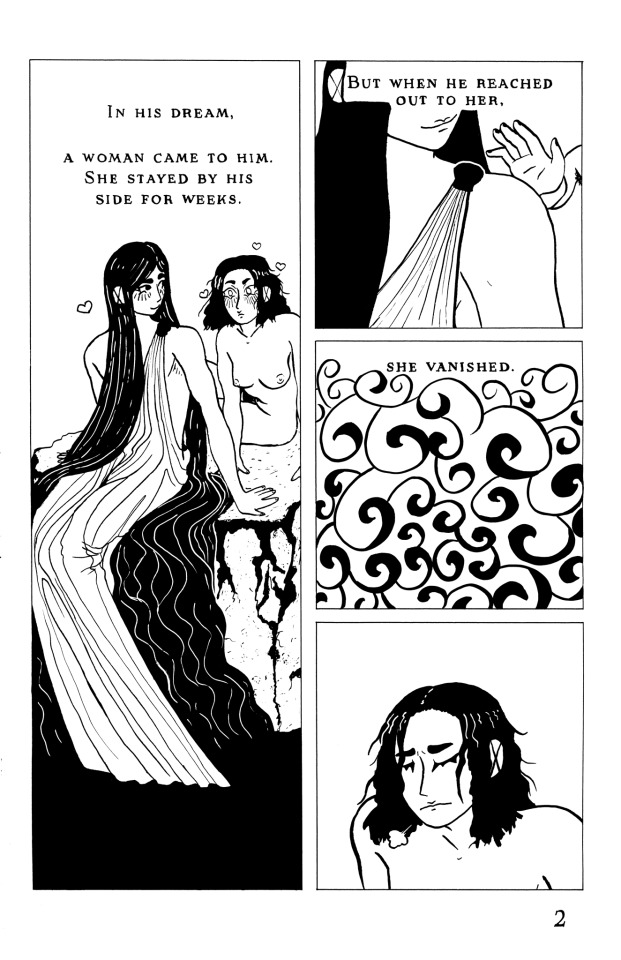

something something love knows no boundaries etc.
hey it’s been a while here’s some art
#comics#comic#black and white#comics art#comics artist#irish folklore#folklore#celtic#celtic pagan#paganism#druid#druidism#druidic#celtic folklore#pagan art#celtic art#pagan stories#celtic stories#pagan comics#celtic comics
971 notes
·
View notes
Photo
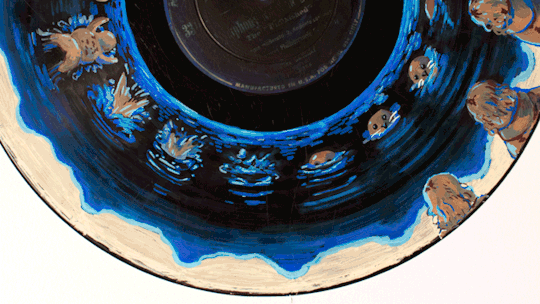
the Selkie-- a well known celtic myth of shape-shifting beings, often women, who can only return to the water in their sealskins.
207 notes
·
View notes
Text
Cernunnos Devotional Beads (SOLD)


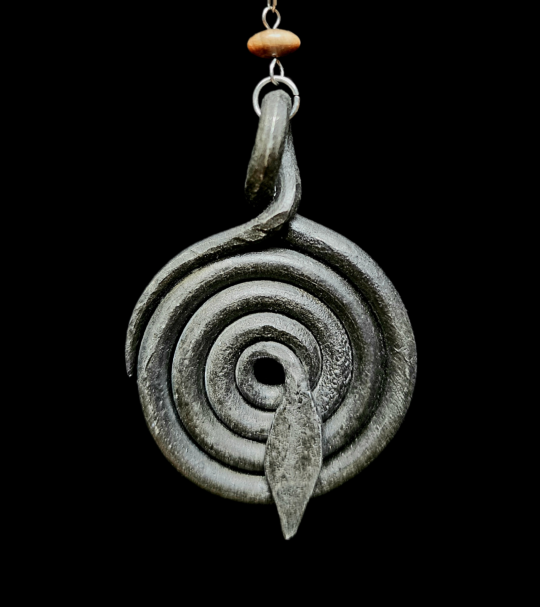

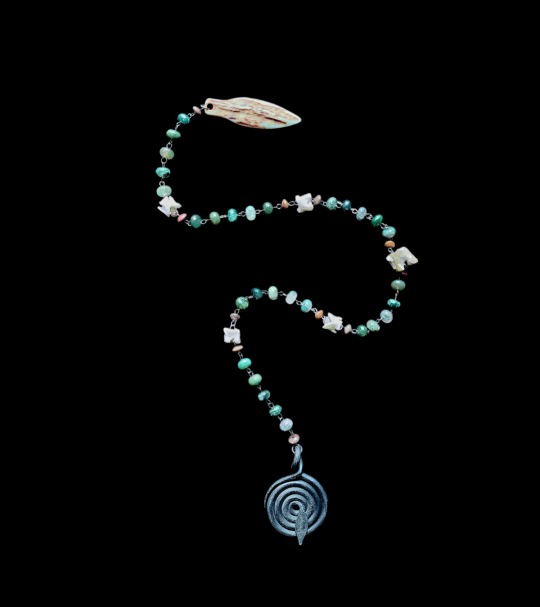
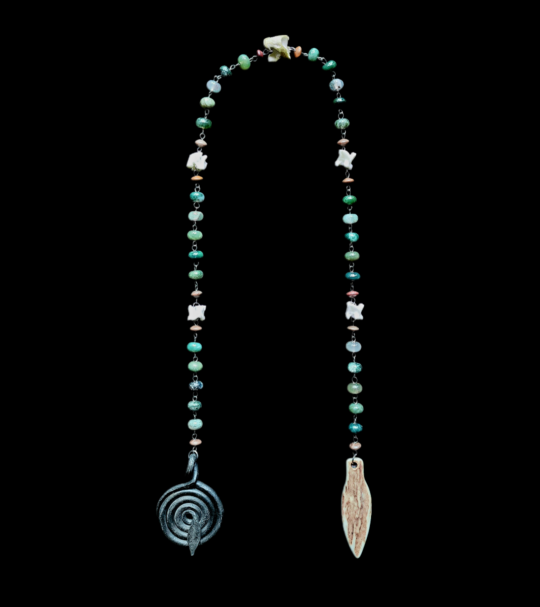
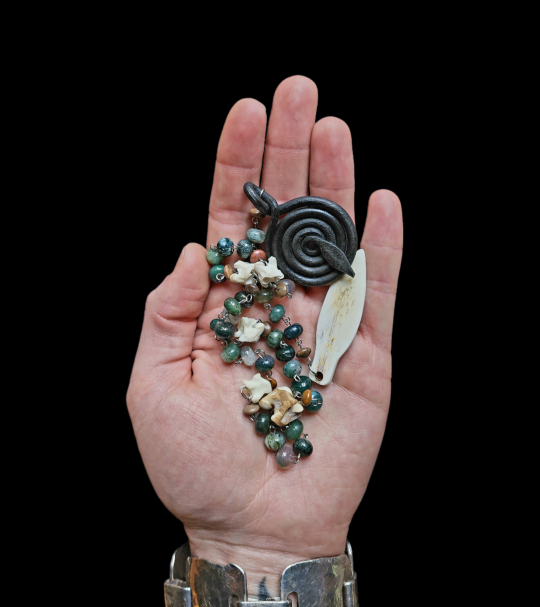
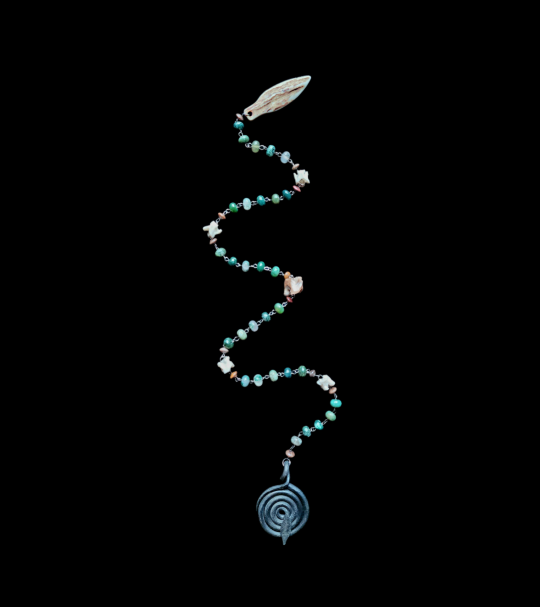
This set of unique devotional beads was ritually crafted and consecrated in the name of Cernunnos—Horned God of Celtic antiquity.
It was constructed from beads of Moss Agate (a stone strongly associated with the Wilderness), along with counter beads of scavenged Serpent Vertebrae (serpents being a greatly sacred animal to Cernunnos), which are bracketed with small beads of Jasperized Wood (beautifully embodying an amalgam of botanical and chthonic virtues.) On one end of the garland is secured an Arrowhead Pendant, hand-carved from Stag Antler (a potent token of his roles as Horned Lord and Master of the Wild Hunt). On the other end is secured a hand-forged Steel Pendant (chosen for the magical potency of/ancient reverence for Iron, as well as the piece's resemblance to both a coiled serpent and the coiled germ of a seedling preparing to sprout.) Once the Garland was constructed, the piece was hallowed in a sylvan ritual beneath the light of a Penumbral Lunar Eclipse.
This piece measures approximately 23.5 inches/60 centimeters long, and all connecting rings and pins are made from stainless steel. If interested in acquiring it or inquiring about it, please feel free to reach out here. It can also be purchased directly through my shop, Wending Wares.
#wending wares#devotional beads#witch beads#pagan beads#pagan rosary#witch tools#pagan tools#cernunnos#horned lord#celtic witchcraft#celtic folklore#the horned one#horned god
51 notes
·
View notes
Text
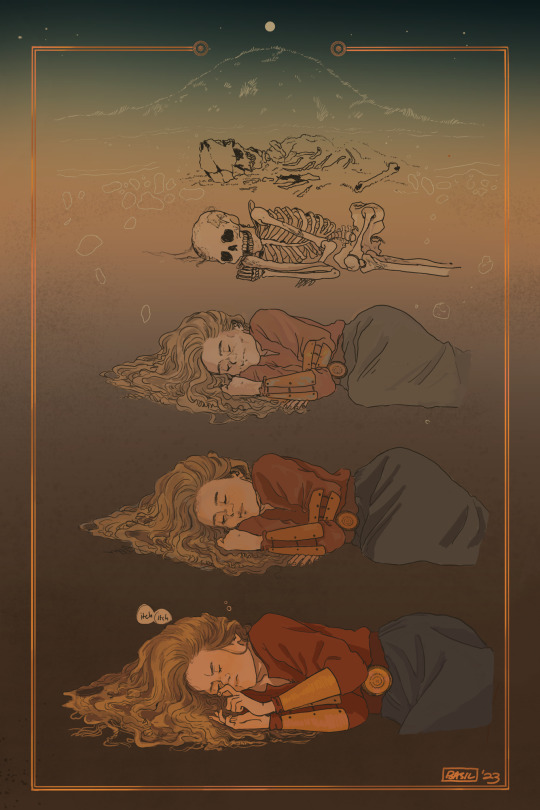
and upon the eve of each Samhain, the ancestors awake.
#webcomic#celtic folklore#character art#the lonely barrow#original comic#samhain#artists on tumblr#digital illustration#oc art#the chief#folk art#folklore#ancestors#british folklore#writers on tumblr#comic artist#coming soon#horror art#cw: death#cw: body horror#death and rebirth
89 notes
·
View notes